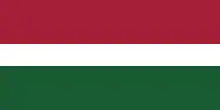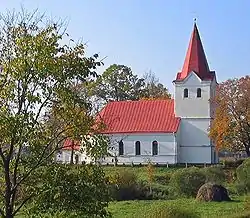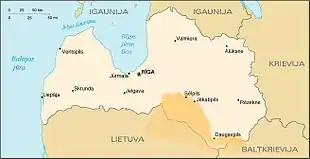Selonia
Selonia (Latvian: Sēlija; Lithuanian: Sėla), also known as Augšzeme (the "Highland"), is a cultural region of Latvia encompassing the eastern part of the historical region of Semigallia (Latvian: Zemgale) as well as a portion of northeastern Lithuania. Its main city and cultural center is Jēkabpils. The Selonian language has become extinct, though some of the inhabitants still speak a Latgalian dialect.


History

Not an administrative division in modern Latvia, Selonia currently contains the municipalities of Aknīste, Ilūkste, Jaunjelgava, Jēkabpils, Nereta, Sala, and Viesīte, plus the parts of the city of Daugavpils, city of Jēkabpils, Daugavpils municipality and Krāslava municipality on the left bank of the Daugava River.
The subjugation and baptism of the Selonians started in 1208, when Albert of Buxhoeveden captured Sēlpils hillfort (Latin: castrum Selonum). The term "Selonians" is most probably the German adaptation of the Livonian name "Highlanders", which leads to the hypothesis that the Selonians and Aukštaitians belonged to the same ethnos. The Livonian Chronicle of Henry describes the Selonians as allies of the Lithuanians. In 1218 the region formed a Selonian diocese,[1] but in 1226 part of that diocese was joined to the Riga archbishopric and the Bishopric of Semigalia was formed. Nowadays the region is mainly inhabited by Latvians with larger proportion of ethnic minorities of Russians, Poles, Belarusians and Lithuanians in the southeastern municipalities (Ilūkste Municipality and Daugavpils Municipality).
Historic boundaries
Among historical documents, the Mindaugas's Donation Act of 1261 is the one that best describes the transfer of the Selonian lands to the Knights of the Sword.[2] Their boundary went from the Daugava at Naujene, near Daugavpils castle, running along Kopkelis to Luodis lake and northwards along the Duseta river to lake Sartai and towards the source of the Šventoji. It stretched further to the Latuva, Vašuoka and Viešinta rivers, along the Lėvuo river northwards to the Mūša (Mūsa) and downstream, to the mouth of the Babīte (Būga, 1961, p. 273–274).
Thus, the historical sources describing the Selonian boundaries in the second half of the 13th century are rather precise. The linguist Kazimieras Būga, basing himself on linguistic data alone, specifies the southern boundary of the Selonian territory as running approximately by the towns of Salakas, Tauragnai, Utena, Svėdasai, Subačius, Palėvenė, Pasvalys, and Saločiai. Regional history museum of the Selonia region of Lithuania, founded in 1928 in Biržai Castle.
References
- M. Jučas; Istorijos institutas (Lietuvos TSR Mokslų akademija); R. Rimantienė; Regina Volkaitė-Kulikauskienė (2005). Lietuvos archeologija. Mokslas. p. 48. ISBN 978-9986-23-126-4.
- Zigmas Zinkevičius (1996). The history of the Lithuanian language. Mokslo ir enciklopedijų leidykla. p. 39. ISBN 978-5-420-01363-2.
Sources
- Arveds Švābe, ed.: Latvju enciklopēdija. Stockholm: Trīs Zvaigznes, 1952-1953.
- Edgars Andersons, ed.: Latvju enciklopēdija 1962-1982. Lincoln: American Latvian Association , 1983-1990. Entry "Sēlija" available at historia.lv. Retrieved 25. II. 2006.
- Vytautas Kazakevičius: "Selonian archaeological sites in Lithuania" Retrieved 25. II. 2006.